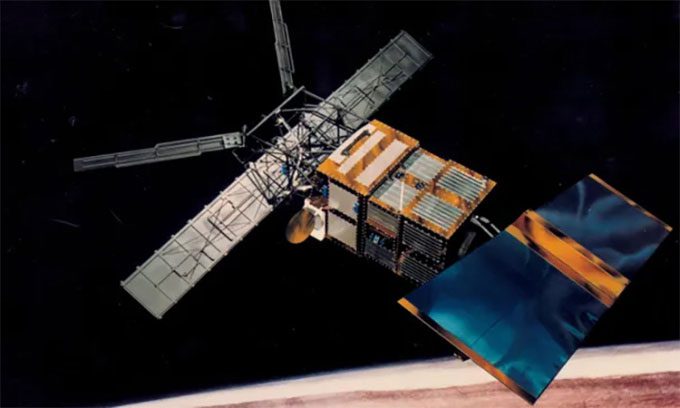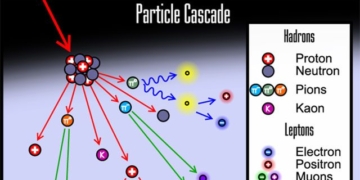European Remote Sensing Satellite 2 (ERS-2) from the European Space Agency (ESA) is expected to re-enter Earth’s atmosphere in February.
The ERS-2 Satellite was launched into Earth orbit in April 1995 and completed its Earth observation mission in September 2011. ESA began preparations for this satellite’s re-entry process even before its primary mission ended, Space reported on February 8.

Illustration of ESA’s ERS-2 satellite in Earth orbit. (Image: ESA).
Specifically, ESA fired the engines of ERS-2 a total of 66 times in July and August 2011. These maneuvers consumed the remaining fuel of ERS-2 and lowered its average altitude from 785 km to approximately 573 km, significantly reducing the risk of collision with other satellites or space debris, while ensuring that ERS-2’s orbit would decay fast enough for it to re-enter the atmosphere within 15 years.
When it was first launched, ERS-2 was the most sophisticated Earth observation satellite developed and launched by Europe. At the time of launch, it weighed 2,516 kg. Now, with its fuel depleted, it weighs about 2,294 kg.
ERS-2 is quite large, but much larger objects have fallen back to Earth in recent times. For example, the core stage weighing 23 tons of the Long March 5B rocket (developed by China) falls uncontrollably about a week after each launch. Such re-entries have occurred three times in the last three years. This design characteristic has outraged many space experts.
The re-entry process of ERS-2 will last much longer, up to 13 years. However, the satellite is now low enough to be pulled down quickly by atmospheric drag. This process will accelerate in the coming days. The fall will be uncontrolled since ERS-2 has run out of fuel, and experts cannot fire the engines anymore.
It is still too early to predict the exact location and time of ERS-2’s descent into Earth’s atmosphere, but it is highly likely that it will fall into the ocean since water covers about 70% of the planet’s surface. The satellite will disintegrate at an altitude of about 80 km. Most debris will then burn up in the atmosphere. According to ESA, there is no need to worry too much about debris falling to Earth’s surface as they do not contain harmful or radioactive materials.
The likelihood of debris hitting a person is extremely low. The risk of an individual being injured by space debris each year is less than 1 in 100 billion, according to ESA. This figure is about 65,000 times lower than the risk of being struck by lightning.




















































